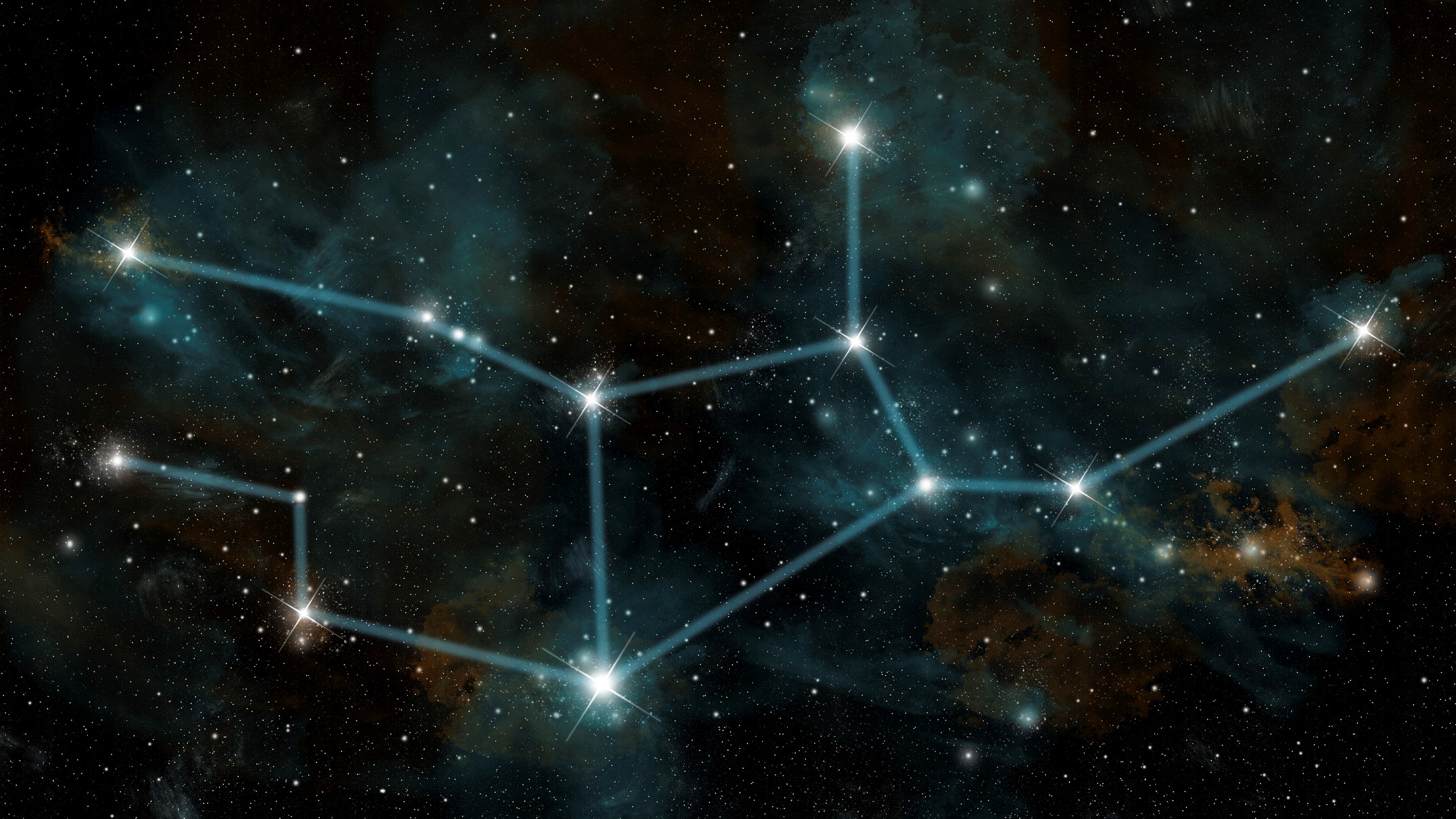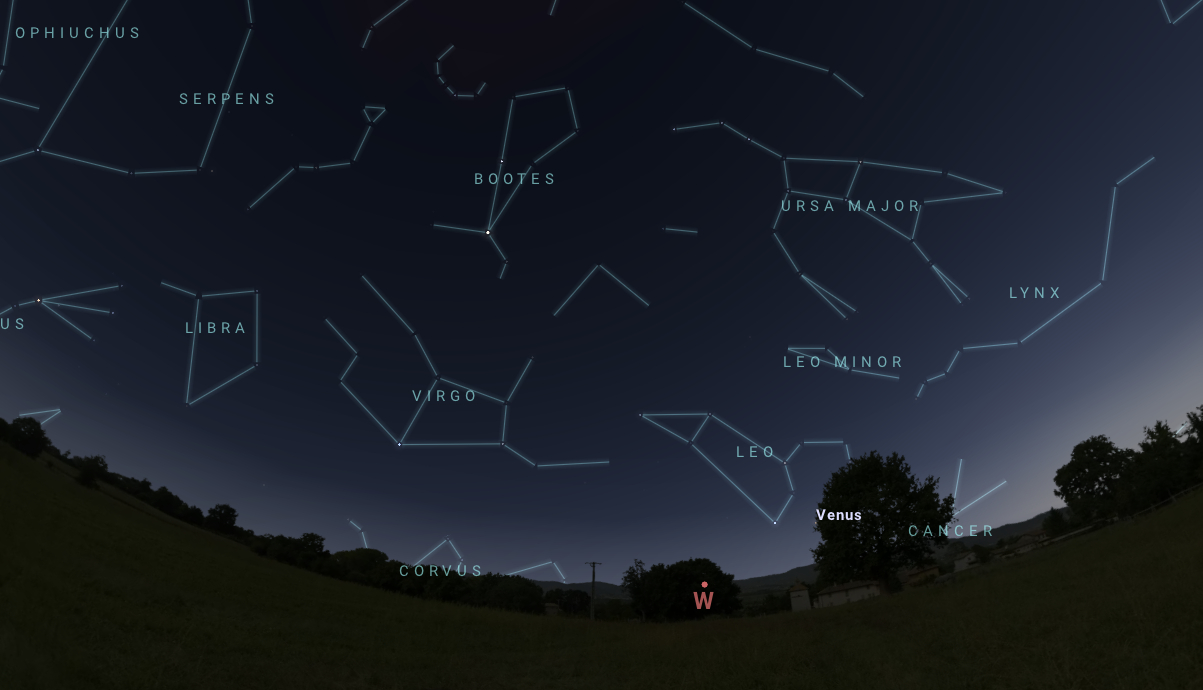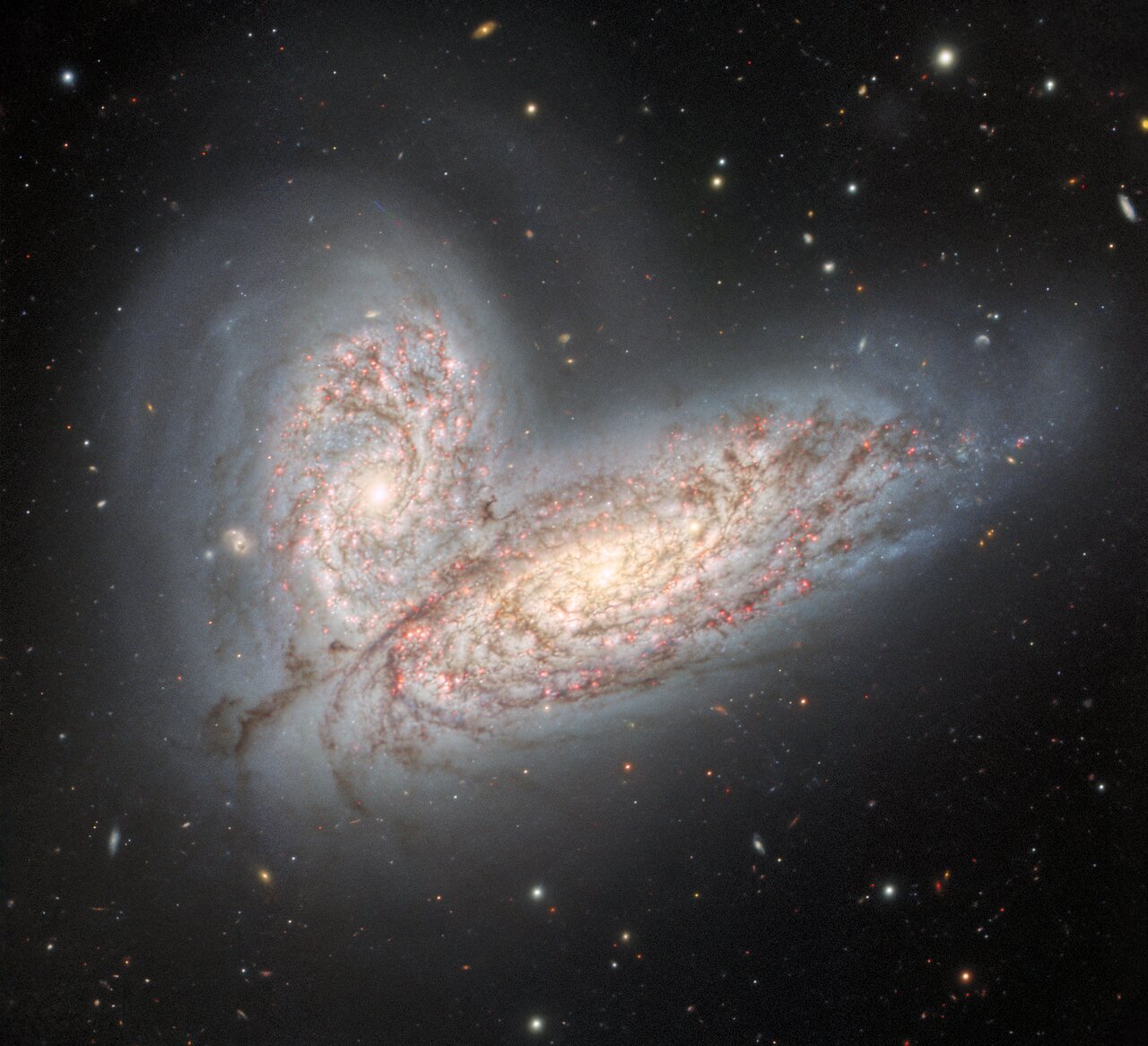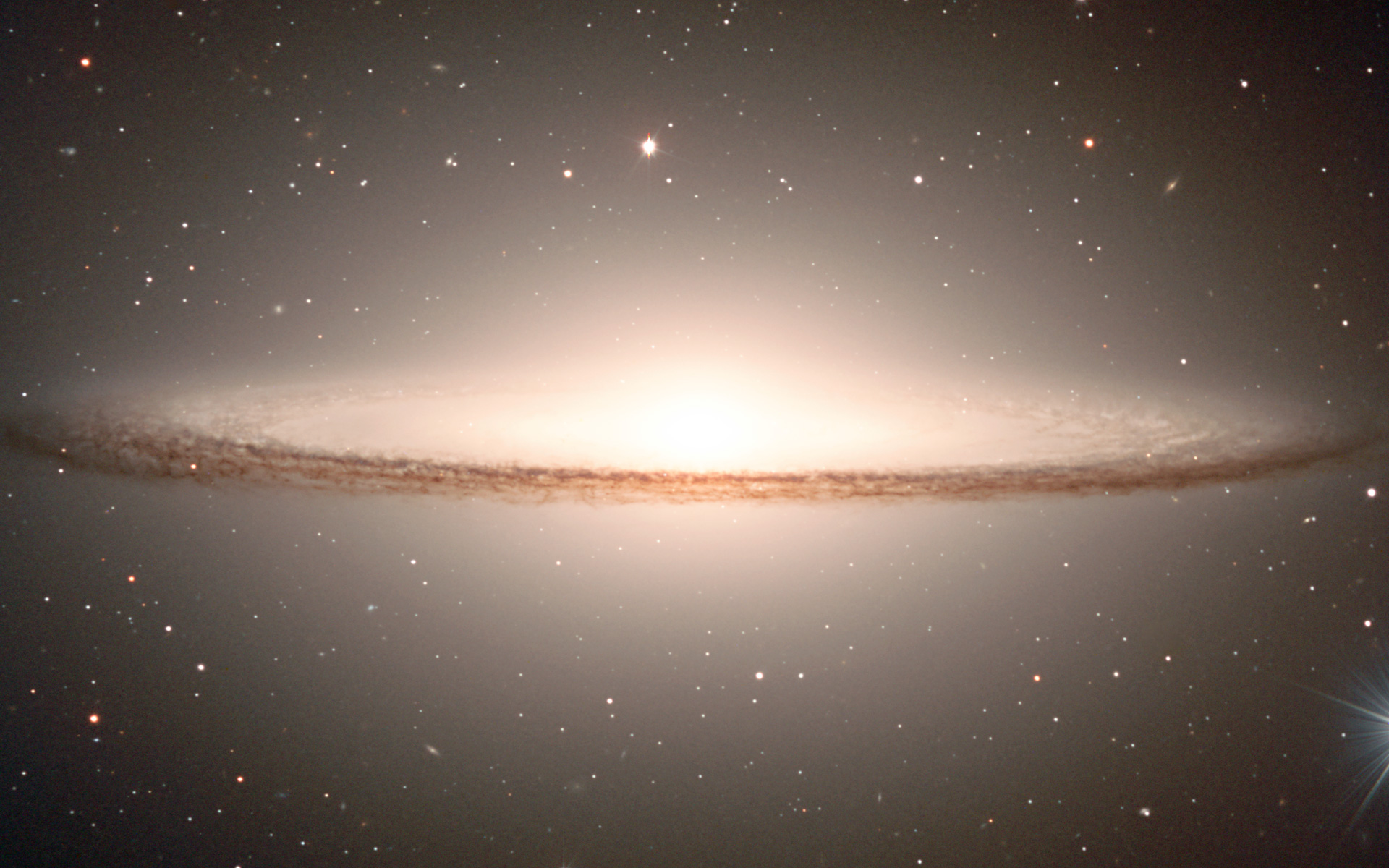Virgo constellation: Location, stars and mythology
Virgo is the largest constellation of the Zodiac.

Virgo is the second-largest constellation in the sky and the largest constellation of the Zodiac.
The constellation Virgo is famous primarily for its affiliation with astrology as one of the twelve constellations of the zodiac, but it also contains a treasure trove of interesting deep-sky objects.
Virgo means "the virgin" in Latin, and contains one of the brightest stars, Spica, according to the stargazing website Constellation Guide.
Related: Night sky: What you can see tonight (maps)
Where is the constellation Virgo and when can you see it?

Virgo lies between the constellations Leo and Libra, at 13 hours right ascension and 2 degrees South declination. It's visible in the Northern Hemisphere during spring and summer, and to Southern observers during autumn and winter.
The easiest way to find Virgo is with the handy phrase, "arc to Arcturus and speed on to Spica." Starting with the curved handle of the Big Dipper, follow that arc to the bright star Arcturus, which lies in the constellation Boötes. Continuing along that curve, you'll then find Spica, the brightest star in Virgo, and you can trace the remainder of the constellation from there. Spica is a bright blue variable star, whose name means "ear of grain."
Many of Virgo's stars are quite faint, but if you're in a dark sky you may be able to trace the major components of the constellation, which make a stick figure person with bright Spica as one hand and smaller Vindemiatrix ("the grape gatherer") as the other. The moderately bright binary star system Gamma Virginis lies at the center as if it's the glowing heart of the virgin.
Virgo observing targets
There truly is a lot to explore within Virgo, as the large constellation measures over 1,200 square degrees in the night sky. Virgo contains many excellent sights, including 11 Messier objects — the most of any constellation except Sagittarius. This is because the constellation hosts the Virgo cluster, a large amalgamation of over 1,300 galaxies next to the Local Group, which our Milky Way belongs to. Some of these targets are visible with the naked eye, but for others, you'll want to check out our guides to the best binoculars and best telescopes for stargazing.
Although not visible with any backyard stargazing setup, Virgo is also home to a number of known exoplanets, including the directly-imaged gas giant GJ 504b and the first planet discovered around a pulsar, PSR B1257+12 b. Virgo also has WASP-39b, where the James Webb Space Telescope recently detected carbon dioxide in an exoplanet's atmosphere for the first time.
Jargon buster
Magnitude: An object's magnitude tells you how bright an object is as it appears from the Earth. In astronomy, magnitudes are represented on a numbered scale. Quite confusingly the lower the number, the bright the object. For example, an object of a -1 magnitude is brighter than one with a magnitude of +2.
Right ascension (RA): Right ascension is to the sky what longitude is to the surface of the Earth, corresponding to east and west directions. Measured in hours, minutes and seconds since, as Earth rotates, we see different parts of the sky through the night
Declination (Dec): Tells you how high your object will rise in the sky. Like Earth's latitude, declination measures north and south. Its units are degrees, arcminutes and arcseconds. There are 60 arcmins in a degree and 60 arcsecs in an arcmin.
Messier 49
Magnitude: 9.4
Distance from Earth: 55.9 million light-years
Coordinates: RA 12h 29m 46.7s Dec +08°00'02"
Messier 49 is an elliptical galaxy, which appears as a fuzzy blob, unlike the well-defined arms of a spiral galaxy. This is the brightest galaxy in Virgo, discovered in 1771 by Charles Messier. This massive, old galaxy contains almost 6,000 globular clusters.
Messier 58
Magnitude: 10.5
Distance from Earth: 62 million light-years
Coordinates: RA 12h 37m 43.5s Dec +11°49'05"
Messier 58 is a picturesque barred spiral galaxy, also discovered by Charles Messier in the 1700s. As another of the brightest galaxies in Virgo, this is a great target for amateur observers. Two supernovas were observed in this galaxy in the 1980s.
Butterfly Galaxies / NGC 4567 and NGC 4568

Magnitude: 10.9
Distance from Earth: 59.4 million light-years
Coordinates: RA 12h 36m 34.3s Dec +11°14'17"
The Butterfly Galaxies is a two-for-one special: two galaxies in one target! These spiral galaxies are slowly colliding with each other, originally discovered by William Herschel in 1784.
Messier 87
Magnitude: 9.59
Distance from Earth: 53.5 million light-years
Coordinates: RA 12h 30m 49.42338s Dec +12°23'28.0439"
Messier 87 is a particularly exciting galaxy. Although it appears as a bright blob since it's an elliptical galaxy, it's home to the first supermassive black hole ever photographed. The famous Event Horizon Telescope imaged M87's behemoth black hole in 2017, earning the black hole its name: Pōwehi, which means "embellished dark source of unending creation" in Hawaiian. M87 is a record breaker; it's one of the most massive galaxies in our neighborhood, the second brightest in Virgo, and one of the brightest in radio waves. Stunning images from the Hubble Space Telescope show a massive jet of material shooting away from the center of this galaxy.
Sombrero Galaxy / Messier 104

Magnitude: 8.98
Distance from Earth: 23.9 million light-years
Coordinates: RA 12h 39m 59.4s Dec -11°37'23"
Messier 104 is famous for its resemblance to a sombrero hat, earning its nickname the "Sombrero Galaxy". This remarkable spiral galaxy is almost directly edge-on from our perspective on Earth, highlighting its bright central bulge and dense dust rings. This was a late addition to the Messier catalog, actually discovered by French astronomer Pierre Méchain in 1781.
Virginids meteor showers
According to the stargazing website Universe Guide, the Virginids are a group of meteor showers occurring throughout the Northern hemisphere's Spring in the constellation Virgo. Here are the various showers and when to watch them:
- Pi Virginids: February 13 to April 8, peak approx. March 3
- Eta Virginids: February 12 to March 27, peak approx. March 18
- Theta Virginids: March 10 to April 21, peak approx. March 30
- Alpha Virginids: March 10 to May 6, peak approx. April 7
- Mu Virginids: April 1 to May 12, peak approx. April 24
Virgo mythology
In some stories, according to EarthSky, Virgo is Persephone, the daughter of the Greek goddess Demeter who ruled over the harvests. Persephone was kidnapped by the god of the underworld, Hades, and Demeter's grief caused crops to wither. Zeus, king of the gods, commanded that Hades return Persephone so that the harvests could once again be fruitful, with one catch — Persephone could not eat anything on Earth. Hades gave her a pomegranate to break the deal, and now Persephone must stay with Hades in the underworld for four months each year. Her return coincides with the start of springtime when the constellation Virgo is yet again visible in the Northern Hemisphere's evening sky.
In others, Virgo relates to Dike, the Greek goddess of justice. She is said to hold wheat in one hand, which in the constellation is the star Spica. Nearby Libra fits the theme as well, keeping the scales of justice nearby their relevant goddess. As with all constellation mythologies, various cultures created different stories of the sky; Virgo, for example, takes after Atargatis, the corn goddess, from Ancient Syria.
Virgo constellation FAQs answered by an expert
We asked Mathew Yu, an astronomy graduate student at the University of California, Los Angeles, a few frequently asked questions about the Virgo constellation.

Tze (Mathew) Yu is a graduating PhD student at UCLA, working on understanding how extrasolar planets (planets outside of our solar system) arrive at their current locations around their own stars. By understanding other planets out there, he tries to understand how our solar system fits in the bigger picture of the universe.
Where is the Virgo constellation?
Virgo is between the constellations Leo and Libra on the ecliptic.
How can you find the Virgo constellation?
To find Virgo, the easiest way is to first locate the Big Dipper, which should be next to Polaris (the North Star). Then, draw an arc extending from the Big Dipper's handle, until you find the bright star Arcturus of the constellation Boötes. If one then extends a line to the ecliptic, the brightest star of Virgo (Spica) should be visible just below the ecliptic. All that is left is to trace out the rest of the constellation!
How many stars are in the Virgo constellation?
Depending on how many stars you include within the constellation, there are either 9 or 15 main stars. A few of them are double stars that are very close to each other. In the general area of Virgo, there are some 160 stars within the visible brightness of the human eye.
Additional resources
Explore the sky around the Virgo cluster with this image of the Coma Berenices constellation. Discover M9, a bright, spiral galaxy situated in the Virgo cluster of galaxies courtesy of NASA. See NGC 4388, a galaxy in the constellation Virgo in stunning detail thanks to this Hubble Space Telescope image.
Bibliography
Messier Objects (2021, January 31). Messier objects. Messier Objects. https://www.messier-objects.com/
Encyclopaedia Britannica, inc. (n.d.). Virgo. Encyclopaedia Britannica. https://www.britannica.com/place/Virgo
Garner, R. (2017a, October 19). Messier 49. NASA. https://www.nasa.gov/feature/goddard/2017/messier-49
Garner, R. (2017b, October 19). Messier 87. NASA. https://www.nasa.gov/feature/goddard/2017/messier-87
Garner, R. (2017c, October 19). Messier 104 (The sombrero galaxy). NASA. https://www.nasa.gov/feature/goddard/2017/messier-104-the-sombrero-galaxy
Garner, R. (2018, March 16). Messier 58. NASA. https://www.nasa.gov/feature/goddard/2018/messier-58
Lawrence, P. (2023, March 29). A guide to star Vindemiatrix, the lip of the bowl of Virgo. Vindemiatrix, the lip of the Bowl of Virgo | BBC Sky at Night Magazine. https://www.skyatnightmagazine.com/advice/vindemiatrix
McClure, B., & Whitt, K. K. (2023, May 16). Virgo the maiden in Northern Spring Skies. EarthSky. https://earthsky.org/constellations/virgo-heres-your-constellation/
NASA. (n.d.). Exoplanet-catalog – exoplanet exploration: Planets beyond our solar system. NASA. https://exoplanets.nasa.gov/exoplanet-catalog/7134/psr-b125712-b/
Universe Guide. (n.d.). Virginids meteor shower (information, facts, when, where). Universe Guide. https://www.universeguide.com/meteorshower/virginids
Virgo constellation. Constellation Guide. (n.d.). https://www.constellation-guide.com/constellation-list/virgo-constellation/
Join our Space Forums to keep talking space on the latest missions, night sky and more! And if you have a news tip, correction or comment, let us know at: community@space.com.
Get the Space.com Newsletter
Breaking space news, the latest updates on rocket launches, skywatching events and more!

Briley Lewis (she/her) is a freelance science writer and Ph.D. Candidate/NSF Fellow at the University of California, Los Angeles studying Astronomy & Astrophysics. Follow her on Twitter @briles_34 or visit her website www.briley-lewis.com.
